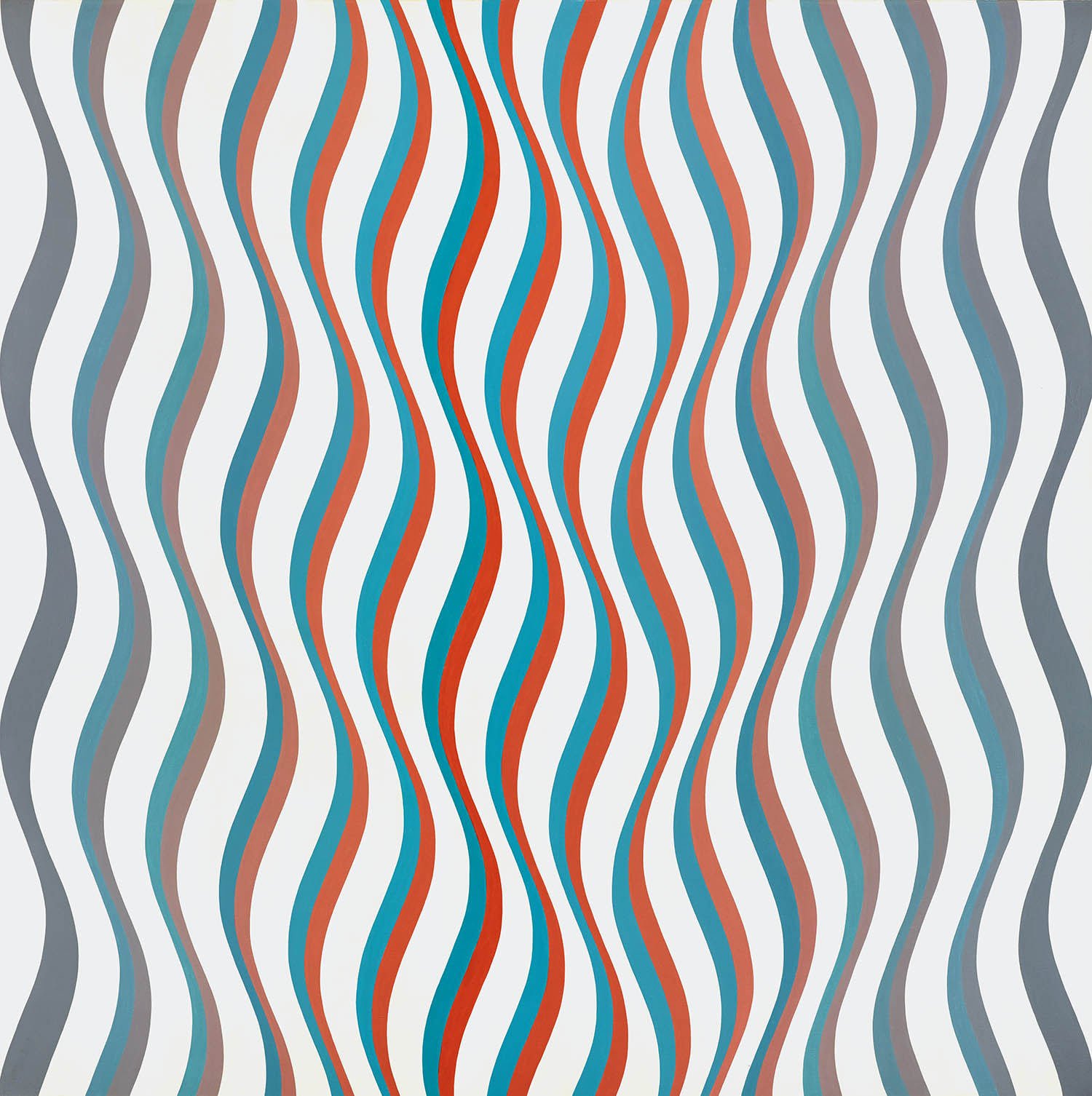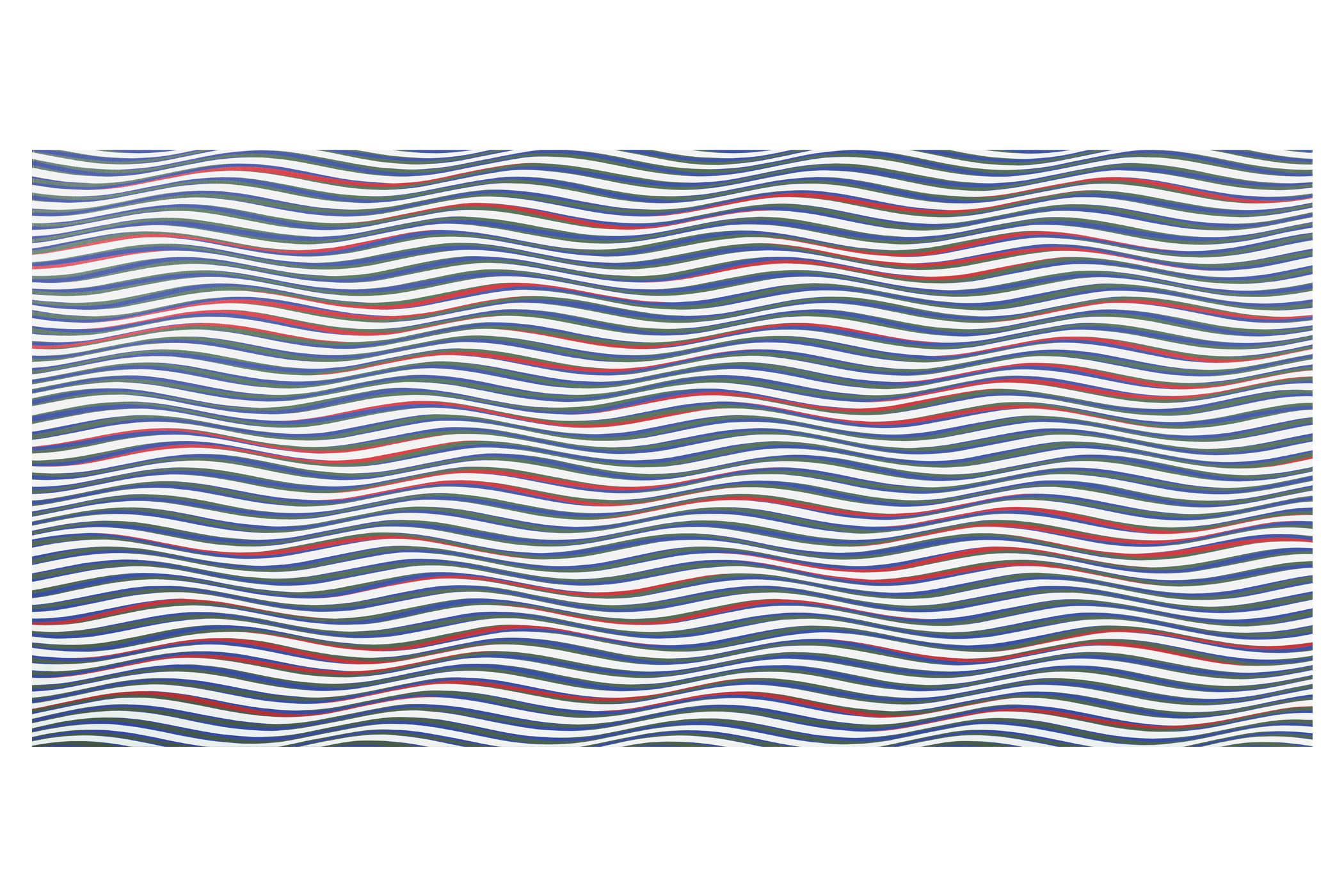Images of a youthful, dark-haired Bridget Riley and her ice-cool monochrome paintings are among the emblems of the 1960s. They sat so well in the glossy magazines of the day that it would be easy to think her work responded to fashionable, cutting-edge concerns: new technologies, space, psychedelics. The truth is very different.
In 1939, when she was eight, Riley moved with her mother and sister to a damp cottage on the Cornish coast to see out the war. Those years spent on the Atlantic – crouching beside rock pools, walking along clifftops, swimming in the sea – nourished Riley’s imagination, forming “the basis of my visual life”, she wrote, and the bedrock of an enduring career.
Riley doesn’t represent nature directly. Instead, she finds an equivalent for the experience: with her bold, geometric, abstract work, she hopes a viewer’s “eye can travel over the surface in a way parallel to the way it moves over nature”.
How does this translate to a new exhibition of Riley’s work, Learning to See, at the Turner Contemporary, perched on Margate’s harbour wall? In a gallery where the sea is framed by magnificent triple-height windows, how will the work stand up? Can an equivalent for the sea ever be found?
On the day I visit, the sea is sending sheets of water skidding across the museum forecourt and tossing tufts of foam across the beach. The first work at the entrance – thick horizontal bands dominated by blue and black wrapped into a corner, painted directly on to the walls – struggles to rival the drama occurring just outside the window.
But once inside the (windowless) gallery, the paintings wrest back control. Curated in close collaboration with Riley, still actively working at the age of 94, the display is not chronological, yet it covers every decade of her career. Works resonate across the walls and over the years – such as the mesmeric Streak 3, dating from 1980, placed opposite Arrest 3, from 1965. In both, curved lines ebb and flow horizontally over the width of the canvas, summoning hills and valleys that rise and fall with extraordinary vividness from the flat surface.

Cataract 1, from 1967, sees the Bridget Riley ‘unleash vermilion and blue’ on a rippling canvas. Main image: the ‘mesmeric’ Streak 3, from 1980
Winter Palace, from 1981, speaks directly to Silvered Painting 2, 2023-1981, sharing a shimmering palette of blues, oranges and pinks inspired by the artist’s travels to Egypt. The dating of some pieces in reverse indicates where a painting has been realised from a study made years ago; Riley often looks backwards to step forwards. “You learn to see,” she has said, “you lay aside some ways of past seeing, you acquire new ways of seeing, it’s a developing activity and that is what is enjoyable.”
This time-hopping works because of how consistent Riley’s project has been. Since the early 1960s, she has gathered an alphabet of visual forms, adding to it methodically over the decades. She began with basic shapes – circles, squares, curves, triangles – testing them to see how they behaved in different combinations and structures. Only once she had explored all the possibilities of black, white and grey did she introduce colour to her work, moving on to “coloured greys” before allowing herself, in 1967, to unleash vermilion and blue on Cataract 1, on loan here from a private collection. With this visual vocabulary, she asks questions: if I change the order of these bands of colours, what happens to the overall rhythm? If I tighten this curve, how does that colour behave?
Yet if Riley’s controlled process, painstakingly executed by anonymous hands (she’s used assistants since the early 1960s), sounds dull and mathematical, the result is the opposite. “I wanted to bring about some fresh way of seeing again what had already almost certainly been experienced, but which had been either dismissed or buried by the passage of time; that thrill of pleasure which sight itself reveals,” she wrote in 1984. Rules and constraints are the tools with which she mines for moments of recognition and surprise.
This show is a reminder of how important it is to stand in front of a painting and allow it to take effect. These pictures will never reveal their secrets to you on the Instagram grid. No description of Riley’s work ever matches what they do: the flashes of colour that arise from regimented lines of black and white, the way flat canvases undulate and pulse, the afterimage they leave on the white walls, the way certain chords of colour resonate so violently that they can force you to look away.
Inevitably, some of the work puts your eyes to work more effectively than others; the muted wall painting with spheres, Angel, from 2022, and smaller, more recent canvases such as 2025’s Current: Dark Colours 7 are less impactful. But the work is on a continuum, a constant inquiry. Above all, it demonstrates an unwavering belief in the pleasure to be found in looking, the surprises that can be yielded from familiarity – if only you take the time.
Bridget Riley: Learning to See is at Turner Contemporary, Margate until 4 May 2026
Photographs courtesy of the artist
